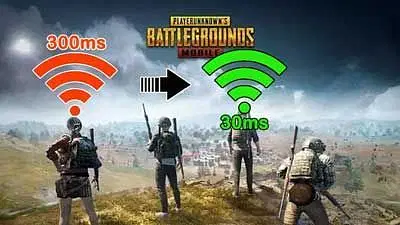PUBG: Battlegrounds has become a global sensation among battle royale fans. The thrill of dropping onto a huge map, looting weapons, and fighting to survive until the end is unmatched. But nothing kills the excitement faster than lag. Whether it’s your shots not registering or your character freezing mid-fight, lag can ruin an otherwise perfect match. That’s why it’s essential to always test PUBG ping and learn how to fix PUBG lag before heading into the battlefield.
Why Ping Matters in PUBG
Ping is the time it takes for your device to send a signal to the PUBG servers and get a response back. Measured in milliseconds (ms), ping determines how quickly your in-game actions are registered.
- 0–40ms → Excellent. Gameplay feels instant and smooth.
- 40–80ms → Good. Slight delays but mostly unnoticeable.
- 80–120ms → Average. Some noticeable lag during fights.
- 120ms+ → Poor. Delays become frustrating and game-breaking.
If you don’t test PUBG ping before playing, you risk entering matches where every second feels delayed—and in PUBG, those seconds can cost you the match.
Why Does PUBG Lag Happen?
Many players complain about lag even when they have decent internet speeds. That’s because lag can be caused by several factors:
- Unstable Wi-Fi signals – Weak wireless connections often drop packets.
- Background apps – Streaming, downloading, or updates eat into your bandwidth.
- Server distance – Playing on a server far away from your region naturally increases ping.
- Device performance issues – PUBG is resource-heavy; low memory or weak hardware can cause stutter.
- ISP routing problems – Sometimes your internet provider takes longer routes to reach PUBG servers.
Benefits of Running a Ping Test
Running a ping test before you play gives you a big advantage:
- Predict gameplay performance – Know how smooth the match will feel.
- Detect unstable connections – Identify whether lag will spike mid-game.
- Choose the right server – Play on the one with the lowest ping for your region.
- Save ranked matches – Avoid losing RP or rank due to avoidable lag.
In short, when you test PUBG ping, you enter matches fully prepared.
How to Fix PUBG Lag: Practical Tips
Fixing lag doesn’t always require advanced tech skills. Simple adjustments can make a huge difference:
- Switch to a wired connection – Ethernet cables are more stable than Wi-Fi.
- Close extra apps – Shut down downloads, browsers, or streaming apps before gaming.
- Restart your router – A quick reset often refreshes the connection.
- Select the nearest server – Always choose the server closest to your region.
- Optimize graphics settings – Lowering resolution and effects reduces lag on weaker devices.
- Use a game booster – Helps prioritize PUBG traffic and free up system resources.
Boosters and Tools for Better Performance
Even after you test ping and make changes, lag may still appear due to hidden issues. That’s where boosters step in. Game boosters optimize memory usage, shut down background tasks, and stabilize your connection. They ensure PUBG gets maximum priority, resulting in smoother gameplay and fewer spikes.
Final Thoughts
In PUBG, every moment counts. A split-second delay can decide whether you win a fight or get knocked out early. By taking a few minutes to test PUBG ping and applying the right steps to fix PUBG lag, you can transform your gaming experience. With stable performance, you’ll focus on strategy, quick reflexes, and ultimately securing that chicken dinner without lag holding you back.

